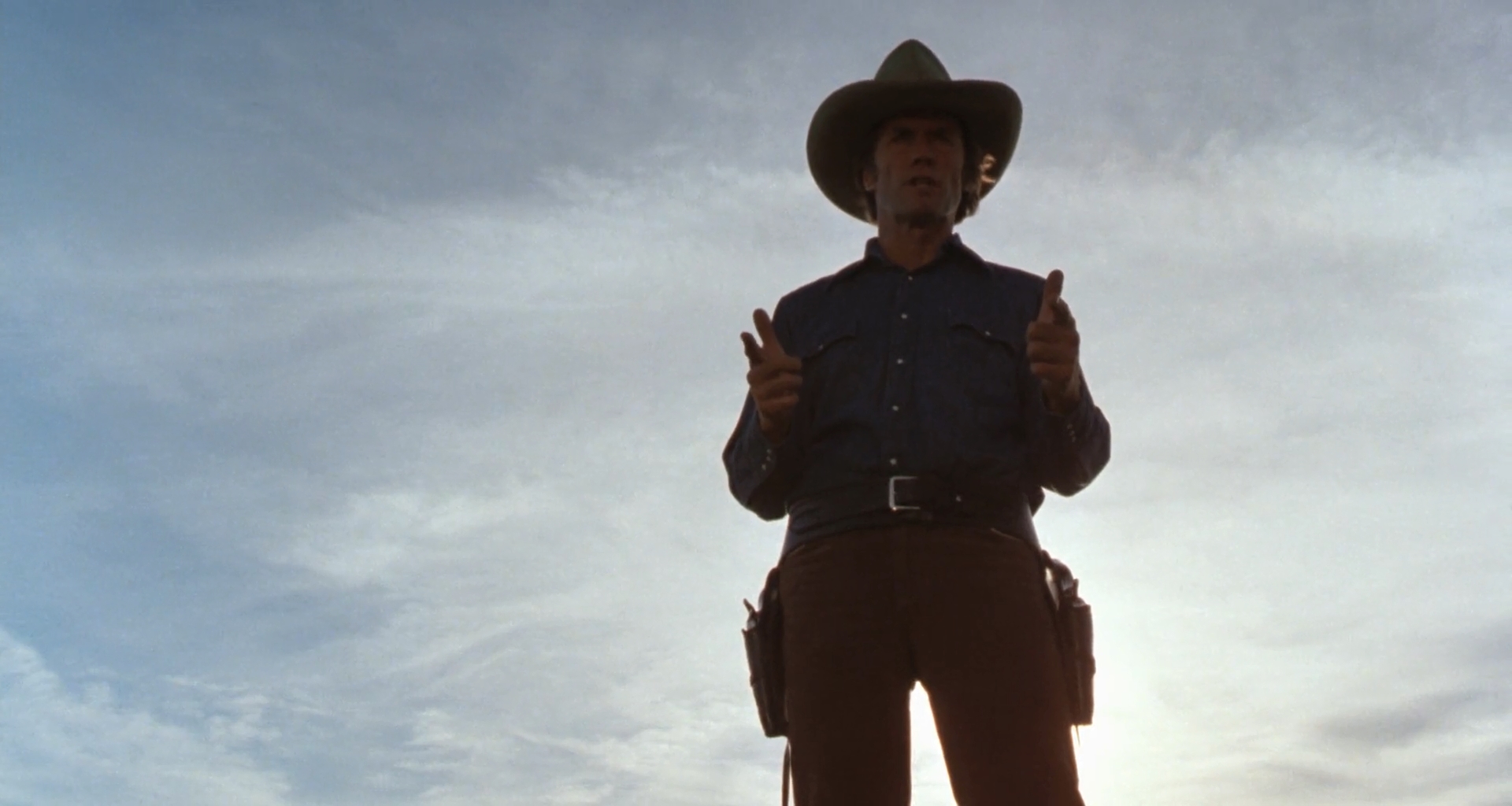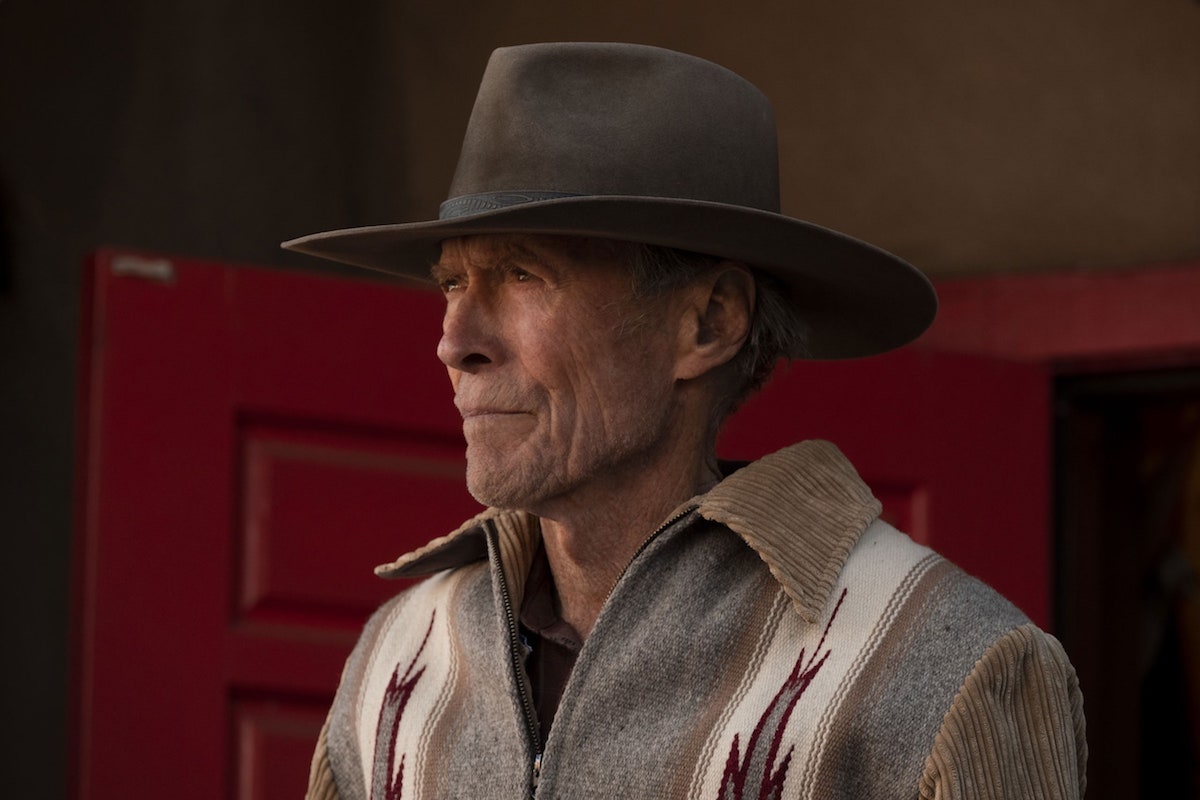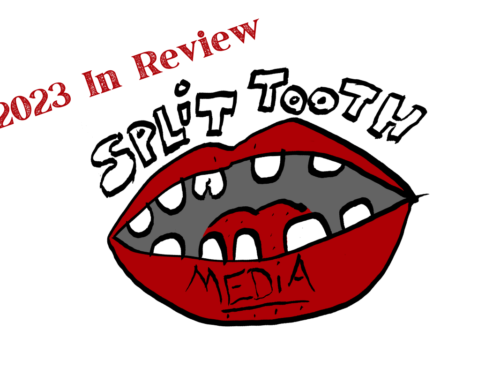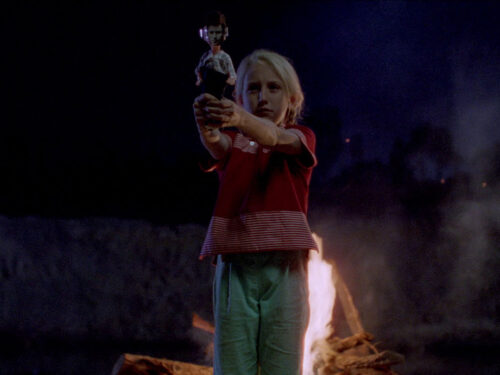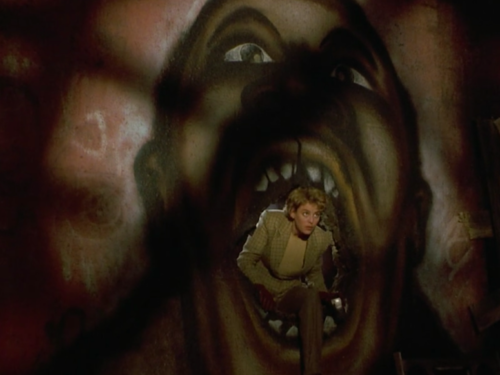The critically ignored Bronco Billy isn’t only a showcase for Eastwood’s talents but an illustrative text for understanding his unique position in both the cultural and cinematic imaginations
Now the paint is peeling from the old carousel
Feeling kind of faded
And my sequin shirts don’t fit as well
But when I see those little buckaroos waiting for me to begin
The years roll back and Bronco Billy becomes just a kid again
Clint Eastwood is among a very small handful of Americans to both establish an indelible on-screen persona and build a deep oeuvre of acclaimed directorial efforts. Buster Keaton, Orson Welles, Woody Allen, Jerry Lewis, and Peter Bogdanovich are perhaps the only others. What separates Eastwood from this tiny group of twice-iconic peers is the consistent luster of his star. Every other member of that club experienced a moment (or several moments) of precipitous public and commercial decline. For Allen, that moment is deservedly ongoing and has more to do with changing attitudes toward his crimes and their echoes in his work than plain disinterest in that work. Eastwood has been no less frequent a tabloid subject than Allen or Bogdanovich throughout his career. He has, however, managed to mostly withstand recurring winds of both public and critical dismissal for decades. As recently as December of 2018, Eastwood was a $100-million box office draw as both the star and director of The Mule. It took the COVID-19 pandemic — which may deliver the death blow to non-franchise in-theater moviegoing altogether — to finally call into serious question whether Eastwood will ever get on the horse or into the director’s chair again.
At the same time, Eastwood stands separate from these directors (besides Lewis) in the sense that he remains a largely niche interest among what might be called “polite critical society.” When he accepted the first of his two Best Director Oscars (for Unforgiven, one of the very few Academy-vetted films worth a damn), Eastwood took a moment to thank “the French film critics, who embraced some of [his] work very early in the game.” Though “French film critics” functions as a metonymy here, for the staff of magazines like Cahiers du Cinema and discerning cinemagoers in general, Eastwood was right to single out Gallic audiences. Like Lewis, he has long occupied a particularly esteemed position among French critics, many of whom have argued for his decidedly unloved films. In his seminal The American Cinema (1968), Andrew Sarris poked fun at one Positif critic’s infatuation with Lewis. Today’s erroneous Eastwood skeptics might take the same position toward Cahiers, a publication that has ranked Eastwood pictures (including True Crime and Midnight in the Garden of Good and Evil) among the Top Ten films of their release years ten times, more often than those of any other American director.
By one now-defunct metric, The Top Ten Money Making Stars Poll, Eastwood undoubtedly ranks alongside the very brightest and most enduring of Hollywood superstars. Released by the Quigley Publishing Company annually between 1915 and 2013, the Poll offers a dependable sense of which actors were most bankable and beloved within a given annum. Eastwood earned a spot in the Top Ten 21 times and placed first five times, in three separate decades. Only John Wayne can claim more Top Ten placements and only Tom Cruise has earned the No. 1 spot more often. The Wayne parallels are obvious, though Wayne famously felt alienated by Eastwood’s High Plains Drifter and proved a poor director himself. The Cruise parallels are less readily apparent and, ultimately, more interesting. Like Eastwood, Cruise topped the poll in three separate decades; he’s the only other performer to do so. Though they’ve never shared the screen, The Rookie, one of Eastwood’s weakest directorial efforts, co-stars Charlie Sheen as an unambiguously Cruise-like hotshot. For all the clear differences in their careers, both actors can break their bodies of work into two distinct eras: before and after viral moments featuring pieces of furniture.
Related: Listen to Bennett discuss Eastwood’s latest film, Cry Macho, on the Split Picks podcast.
Tom Cruise famously celebrated his new relationship with Katie Holmes by jumping on Oprah’s couch while promoting Steven Spielberg’s The War of the Worlds. The incident confirmed many filmgoers’ worst suspicions about the eccentricity of an unusual leading man. He remains the money-generating star of the Mission Impossible franchise, but he hasn’t worked with Spielberg since or gotten anywhere near the Oscars. He’s still surrounded by a certain indescribable aura. Clint Eastwood infamously chose to wing it during his appearance as a surprise guest at the 2012 Republican National Convention. In a routine that stretched well past its allotted five minutes, Eastwood addressed an empty chair, a stand-in for an improbably profane version of sitting President Barack Obama. It earned mixed responses in the room and was greeted by the press as an unmitigated disaster. The so-called Chair Speech warranted its own Wikipedia page, invited ongoing attacks against Eastwood, and seems to have permanently colored perceptions of his work and politics. Never mind that he starred in a Super Bowl commercial that very same year which some (Karl Rove among them) considered an Obama endorsement.
Eastwood’s early career saw charges that he was simply a bad actor. Ongoing decades brought critics like Pauline Kael, who greeted Dirty Harry with the assertion that Eastwood was a bad actor in a more fundamental and insidious sense, an avatar and mouthpiece speaking in unambiguous terms to a fascistic chunk of the populace. Since the Chair Speech, he’s faced a new onslaught of criticism, mostly from far less astute critics. American Sniper’s reception provides the quintessential snapshot of Eastwood’s unusual, half-toxic cultural cachet and the supreme influence he exerts over his films through his very presence, even the ones he doesn’t star in. Reflecting on American Sniper’s brief moment as the centerpiece of the culture war, it’s easy to forget that it’s really a pretty anodyne adaptation of a racist screed. Eastwood replaces the frothing-at-the-mouth Chris Kyle, who railed against “savages” in the Middle East, with a walking embodiment of the unquenchable, inarticulate bloodthirst of post-9/11 America, a man who might feel conflicted if he could only feel. Bradley Cooper gives an uncharacteristically unmannered performance and Eastwood’s direction of wartime action belies his reputation for a lack of polish. Nevertheless, the film mobilized two classes of critics eager to dance on Eastwood’s grave: those who take issue with his politics (often based on little more than the Chair Speech) and those who take issue with his ‘on time and under budget’ approach to directing. The sight of Chris’ and Taya Kyle’s (Sienna Miller) baby (a very obvious doll) set the literal-minded CinemaSins commentariat ablaze. Instead of seeing a man who’s so consumed with hate that his family may as well be props or a director who knows when to trust his audience, most chose to tag the film as an amateurish Exhibit A in the case that Eastwood’s acclaim is unwarranted. Emboldened though they were by The Chair Speech and its resounding thud, they were merely adding their voices to a misguided chorus that has accompanied Eastwood’s champions for most of his career.
Want proof that Eastwood has been a subject of puzzlement for at least as long as he’s been a subject of infatuation? Try and guess which of his star turns this Washington Post critic, Gary Arnold, is describing:
“I don’t know if Eastwood loyalists will be fazed by this undigested collection of screwball, romantic antagonism, dangling subplots, flimsy explanations and obtrusive heartfelt orations, but it defies coherent synopsis.”
Is it Every Which Way But Loose? Its sequel? One of Eastwood’s trashier action flicks like The Gauntlet or The Eiger Sanction? A corny crowd-pleaser like Space Cowboys? A misunderstood masterpiece like The Mule? No, it’s a film that only the most loyal of “Eastwood loyalists” are likely to have seen or even heard of, 1980’s Bronco Billy. Though Letterboxd ranks it as the least popular of Eastwood’s features, it has enjoyed particular popularity in Eastwood’s own estimation. After thanking French critics from the Oscars stage, Eastwood acknowledged the Museum of Modern Art for their appreciation. He was referencing a relationship that began in earnest around Bronco Billy’s release. Reviews for the easygoing masterpiece were mixed and the box office came in below the sky-high expectations. Still, MoMA made the film the centerpiece of its first ever Eastwood retrospective. The “loyalists” Arnold derided were now beginning to count more and more highbrow viewers among their numbers. In his book on Eastwood, Richard Schickel describes the event as a “great moment for [the director],” one of the “happiest nights of his life.” Sondra Locke remembers Eastwood as quipping, “I’d like to see Pauline Kael’s face now” and posits Bronco Billy as anything but a minor film in his career. “In fact,” her autobiography reads, “Bronco Billy was the moment when Clint’s respectability began to turn.”
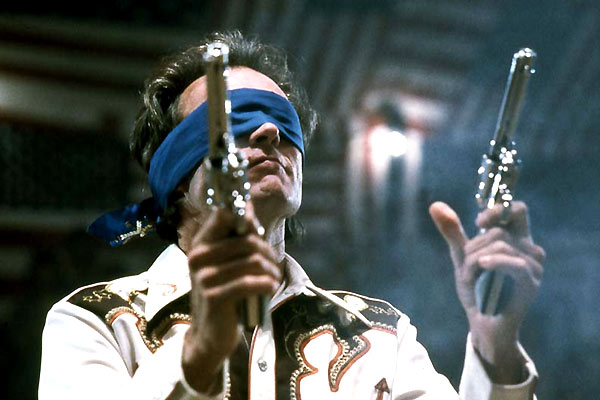
Schickel characterizes Bronco Billy as, circa 2000, the most self-referential film of Eastwood’s long directorial career. Dave Kehr, writing an accompanying essay for PBS’ American Masters in 2004, called it his most optimistic. In the years since, it’s been surpassed on both counts — by the transcendent The Mule and Cry Macho on the first and the fairly tedious Invictus on the second. Bronco Billy has not been equalled, however, let alone surpassed, when it comes to sheer affability; Kehr called it “too loveable” in a Chicago Reader capsule from 1985. Eastwood has directed at least another seven masterpieces since his seventh feature, winning Best Picture with one and topping the box office with another more than 20 years later. He has never delivered a more charming performance, a more interesting reflection on his star identity, or a more winning exploration of pet themes like the necessity of living by one’s own terms. Anyone who believes they’ve got Eastwood pegged, who feels comfortable dismissing him on account of their superior politics, would do well to actually watch his films. Nearly every single one evinces a more nuanced perspective than anyone fixated on the Chair Speech would care to acknowledge. None do a better job of painting Eastwood in all his complexities and contradictions than Bronco Billy. It’s a uniquely rewarding watch for Eastwood enthusiasts, a great introduction to his work, and perhaps the best possible choice for swaying a skeptic with just one film.
Eastwood’s underloved masterpiece centers on William “Bronco Billy” McCoy, the idealistic impresario behind a struggling Wild West Show. McCoy and his ragtag troupe make their way across the Western states, performing to sparse crowds and forgoing regular pay for months at a time. Boasting histories of substance abuse and incarceration, they’re as sordid an ensemble as Ed Wood’s “cast of misfits and dope addicts” and even more diverse. Doc Lynch (Scatman Crothers) serves as the emphatic emcee; Leonard James (Sam Bottoms) performs tricks with a glow-in-the-dark lasso; Chief Big Eagle (Dan Vadis) dances with poisonous snakes while his wife Lorraine Running Water (Sierra Pecheur) provides musical accompaniment; one-handed Lefty LeBow (Bill McKinney) offers backstage assistance; finally, McCoy closes the show with riding and shooting tricks. One recurring source of strife is the show’s inability to secure a comely assistant for McCoy’s show-stopping finale: a wheel of fortune stunt featuring balloons, knives, and a blindfold. McCoy’s inconsistent aim means that few of his co-stars last past their debut performances. At the close of the film’s first performance, a point-of-view shot from the ill-fated Miss Mittzy’s dizzy perspective puts a fun spin on a trademark Eastwood composition. Viewers have watched Eastwood’s fists sail into frame through the eyes of countless hapless heavies and henchmen over the years. Here, the stakes are just as high despite the ridiculous circumstances. It’s a subtle reminder that, whatever we see on screen, McCoy is still ultimately meant to impress us as Clint Eastwood. More than 40 years later, the rotating cast of assistants suggests both his unique longevity as a leading man and his infamous relationship history. Eastwood has managed to outlast contemporaries and would-be rising stars on screen for decades. His romantic past, like the Chair Speech, has inspired its own Wikipedia entry. McCoy finally finds a game sidekick in Antoinette Lily, fittingly played by six-time Eastwood co-star and long-time Eastwood partner Sondra Locke.
While funds present a persistent concern for McCoy and company, a brief early fight makes it plain that money woes won’t ever really get in the way. Experiences together have bonded them through something more than mutual interest; they share a common language and goal. During a rainy drive between gigs, Doc spills the beans that he and the other members of the outfit can’t wait much longer without paychecks. McCoy slams on the brakes and flips, without an instant’s hesitation, from genial showman to strict taskmaster. Wearing a classic Eastwood sneer, McCoy defends himself and cajoles his players with the same cowboy lingo he uses under the big top. “You think when I look at the faces of those little pardners smiling in the audience, I’m thinking about money?” he asks. “I thought I had the best bunch, but I guess I’ve been dealt a crooked hand.” The responses to this outburst suggest that McCoy’s team have not merely internalized his values, but his trailworn sensibility and style of expression as well. They too live in character to a certain extent. Lefty asks, “what in tarnation is he all heated up about?” as if “tarnation” was waiting on the tip of his tongue. When McCoy labels Big Eagle and Running Water “ingrates,” the Chief snaps back, “don’t you swear at my wife, Boss!” One by one, McCoy talks them down before reminding the whole gang what awaits them at the end of the trail. “One day we’ll get that ranch we want,” he promises, “then we can all settle down.”
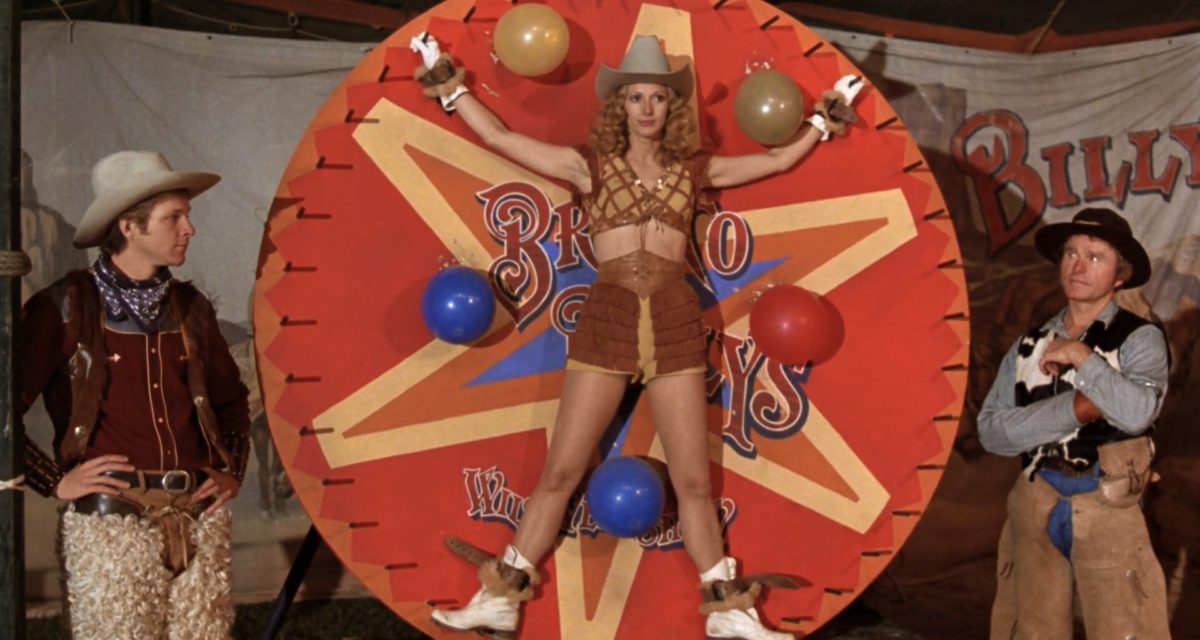
Not even the real-life Locke could deny Bronco Billy’s appeal. Predictably and justifiably, she devotes the majority of her autobiography to her long, fraught relationship with Eastwood and the headline-making palimony case that ended it. The book’s title itself, The Good, the Bad, and the Very Ugly, references Eastwood. It offers a bitter nod to the fact that her longtime partner’s career was always destined to overshadow her own. A good number of the very few kind words she reserves for her frequent co-star focus on Bronco Billy, easily her favorite of their six collaborations. “Even today,” she wrote, “when I think of the Clint I thought I knew and loved most, I think of Bronco Billy.” Those words make it as clear as any others in the book that she eventually saw through the performance and stopped taking part in the applause that closes the film and carried Eastwood into a new era. She seems to argue that Eastwood has made carnival rubes and wide-eyed children of his adoring fans while also acknowledging just how easy it is to fall in with that crowd.
Locke’s affection for Bronco Billy and the way she implicitly likens its central relationship to her’s and Eastwood’s complicates the film’s easy charm. More so than even The Mule — which deals more or less transparently with the real-life Eastwood’s shortcomings as a parent and partner — or Richard Jewell — which employs some pretty crass characterization to make its points — Bronco Billy tests our willingness (our ability even) to separate art and artist. This is in spite of its largely conflict-free runtime. Setting Lily’s early protestations aside, just about the only vitriol we hear anyone throw McCoy’s way is “yellow-bellied egg sucker” and the worst notice his show receives is that it’s “wonderfully corny.” Where the likes of Unforgiven see Eastwood’s characters apologize and make amends, there’s a sense of defiance and untouchability to Bronco Billy and its lead. Even Cry Macho, which sees the aged Mike Milo thwart Mexican cops and criminals with apparent ease, saddled Eastwood’s character with a tragic backstory and lifetime of regret. However much he resembles any number of Eastwood stand-ins, McCoy is different. He is not clawing his way back to respectability throughout the film, clearing his name, or correcting the sins of a dubious past. He doesn’t mourn the life he left behind or lament the man he’s become. When McCoy, astride a horse, describes leaving New Jersey and setting out for the remaining frontier, he sounds like he’s never once looked over his shoulder:
“As a kid, I never so much as saw a cowboy, much less the wide, open spaces — except when I could scrounge up a quarter for a picture show. I was a shoe salesman until I was 31 years old. Deep down in my heart I always wanted to be a cowboy. One day, I laid down my shoehorn and swore I’d never live in the city again. You only live once. You gotta give it your best shot.”
Though interest in his show is dwindling and his fellow performers are having a harder time than usual hiding their displeasure, the trail ahead of the Wild West Show only ever briefly darkens. He delivers the above speech to Lily before making a pathetic attempt to rob a train, which might have served as a chastening moment of climactic humiliation in another film. Instead, the convoy just keeps moving down the road. This time, to a psychiatric hospital where they’ve long performed for the price of bed and board and can even replace their lost tent.
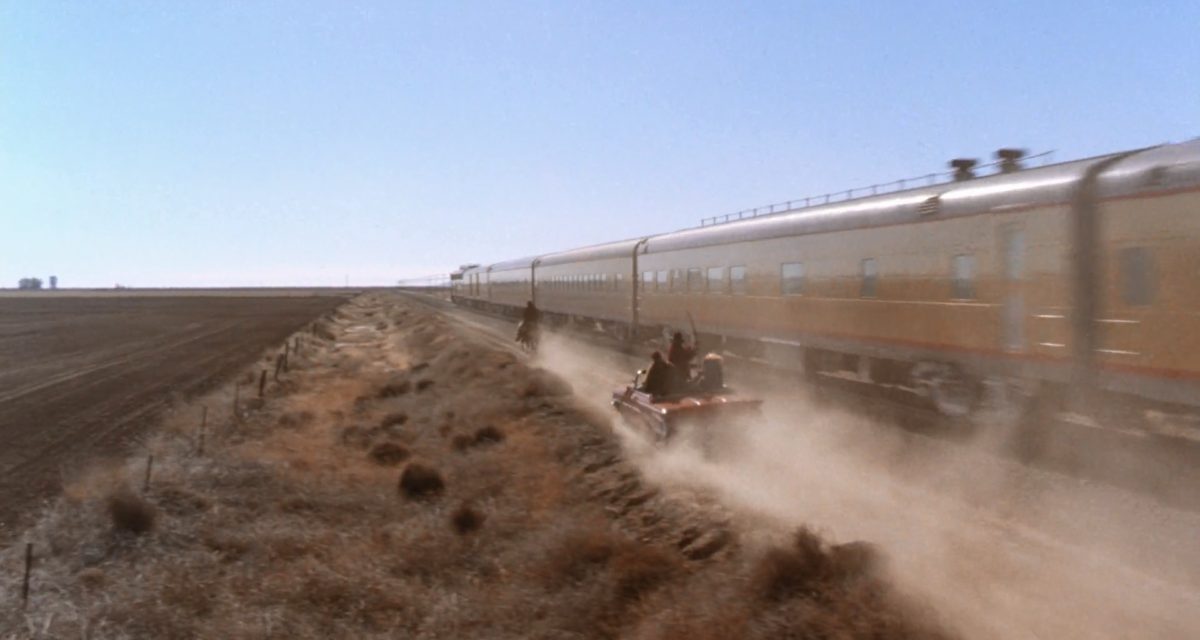
The film’s romantic plot tracks the process by which Locke’s Lily, a New York heiress, goes from hostage to happy member of the troupe. It’s a process that’s often as much about language as it is about emotion. Lily and John Arlington (Geoffrey Lewis) look more out of place in 1970s Idaho than McCoy and his makeshift family. They’re in town to be married, as quickly and painlessly as possible. Thanks to an arrangement out of a screwball comedy, getting hitched before 30 is the only way Lily can hope to inherit the millions her father left in his will. As she smokes through a cigarette holder and delivers all the necessary exposition, Lily even sounds out of place. Her affected WASPy speech marks her as an embodiment of coastal superiority and irked contemporary viewers enough to earn her a Razzie nomination. Arlington quickly tires of her and absconds with her fortune. His decision instigates all those “dangling subplots.” First, Lily’s stepmother learns that the heiress is missing, presumed dead, and makes it clear she’s not too broken up over it. Next, Arlington is arrested for her murder and forced to insist he has no idea where she is. And then, he negotiates a deal with her lawyer to plead insanity and collect $500,000 once he’s free. If that was your introduction to Bronco Billy’s various narrative threads, I forgive you for reading this and deciding to side with Arnold on the subject of subplots.
Conveniently enough (too conveniently for reviewers like Arnold), Lily and McCoy soon cross paths and she becomes an unwitting member of their show. During her initial conversations with McCoy and the others, Lily repeatedly voices her displeasure, often by derisively parroting back what she hears. She assures McCoy that she will not join him in a duet of “Barroom Buddies,” that Arlington did not run off with another woman, and that she was most definitely not messing around with another man. She’s understandably distraught when she asks a reasonable question of Big Eagle (“Who does [McCoy] think he is?!) and gets the only type of response the Chief can think to provide (“He’s Bronco Billy, the best friend a man ever had, besides his wife”). “Best friend!”, she scoffs, “He hasn’t understood a word I’ve said to him all day!” When she eventually falls in love with both McCoy and The Wild West Show, behind the walls of the friendly hospital, the troupe’s particular vernacular plays a major role. A late-night conversation with Running Water offers Apache wisdom right out of a romcom and probably the most important and least affected line of the film: “Don’t you understand what Bronco Billy and the Wild West Show are all about? You can be anything you want. All you have to do is go out and become it.” Recognizing her place in the world and the show, she jumps into McCoy’s arms. On waking the next morning, Lily sings a few bars of “Barroom Buddies” and leaves to smooth things over with Lefty, to that point her primary antagonist within the troupe. Lefty had considered Lily’s presence bad luck, going so far as to try and force her out. Lily reminds them that their luck has recently turned and apologizes for her early aversion to life on the trail. “I’ve been like a scared little calf in a herd,” she assures, promising a new commitment and fearlessness. During her subsequent overture to McCoy, she stops herself short, shouting, “My God! I’m even beginning to sound like you!”
The hospital’s head physician, fresh off a pistol-twirling lesson from McCoy, interrupts his and Lily’s embrace with a clear of the throat and (surprise!) the imprisoned Arlington. By undercutting a moment that could have closed a more conventional picture, Eastwood draws yet more attention to the absurdity of the proceedings. He knows just as well as any critic how unbelievable Bronco Billy’s plot contrivances are and how laughable it is to preface your film’s big kiss with a line like, “whatever you say, Bronco Billy.” News that Lily is actually alive leaves the Wild West Show without its leading lady yet again. Eastwood doesn’t leave us waiting in suspense for very long. Lily returns home, cuts ties with her stepmother, and thinks back longingly on her time with Bronco Billy’s Wild West Show. Life among New York society seems too much to bear and Lily puts a bottleful of pills in her mouth. Thankfully, the pills are sitting on her tongue moments later when a call from Running Water arrives. With miraculous speed, Lily shows up just in time for a surprise entrance. Together, she, McCoy, and the rest put on the best show of their lives — the best show Boise’s ever seen.
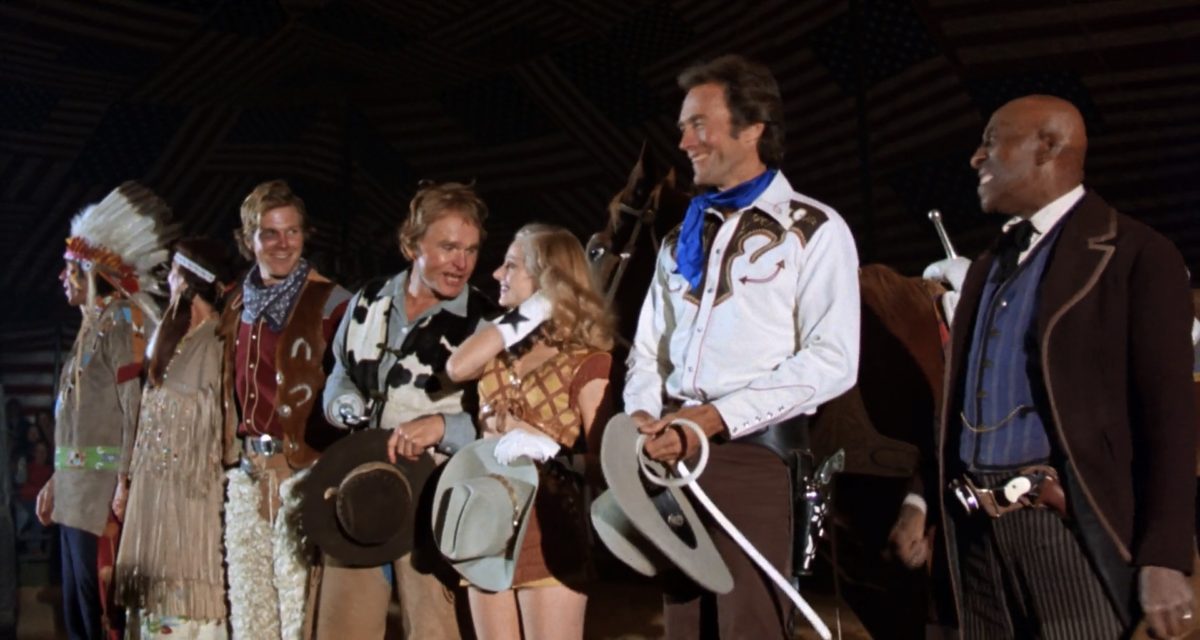
Arnold obviously couldn’t suspend disbelief and get swept up in all the adulation thrown McCoy’s and Eastwood’s way. Some might argue that history vindicates him. He took a stance, after all, against a beloved icon before the palimony suit, before the Chair Speech, before the “pussy generation” comment. When it comes to his stance on Bronco Billy? Well, whatever your take on Eastwood (or Eastwood auteurism/apologia), I’m sure you’d agree Arnold made a useful example of himself with one maddening gripe in particular. He writes, “The Wild West Show has basic credibility problems … it’s difficult to see how the troupe could entertain even scattered customers for more than 30 minutes.” It seems the CinemaSins sensibility predates the advent of YouTube and even the invention of the Internet. You might expect Arnold to start questioning how we can possibly know McCoy is really the fastest gun in the West. ‘And who’s to say what constitutes the fastest gun anyway?’Schickel makes brief concessions to this line of thinking, wondering, for example, how McCoy ever amassed the necessary capital to establish his business. He thankfully wises up about a paragraph later. In addition to acknowledging that Bronco Billy’s virtues far outnumber its flaws, he offers the best assessment of Eastwood’s relation to the film and to McCoy that you’re likely to find:
“[Eastwood] knows the values the movie defends have a quaint air about them — they are funny looking and funny sounding — and that you have to play them very straight. To satirize them is superfluous; it’s been done. To celebrate them too enthusiastically is self-defeating; you begin to sound like a right-wing crazy hopped up on his own loopy rhetoric. Bronco Billy simply asks us to contemplate certain core values — kindness to the weak and tolerance for the eccentric, loyalty to the jointly striving group, above all a belief in the reinventive and redemptive powers of a free country — and after we’re done chuckling at the way its protagonist states them, ask ourselves if they are really so quaint, so irrelevant, after all.”
Schickel, unlike so many of the critics who greeted American Sniper and Richard Jewell with scorn, recognizes that Eastwood is not the ideologue his staunchest critics take him for. He’s a showman first and foremost who can’t help but let personal political leanings and values inform his work. Those values are, fortunately, nothing like the flag-humping patriotism he’s too often associated with. His films have affirmed and reaffirmed that fact both before and after the 2012 RNC. Want proof? Watch Bronco Billy again.
For all the grief he gets as a uniquely Conservative filmmaker, Eastwood regularly earns praise and preemptive eulogies for purveying “films for adults” well into an era that’s almost completely devoid of them. Whether or not Cry Macho struck critics as a half-baked vanity project, few could resist wondering whether it was the last film of its kind. The worst and most plentiful critics appear to have missed the point once again. To describe Cry Macho or Bronco Billy as, first and foremost, “films for adults,” not only risks scaring away viewers looking for fun, but ignores that both films are consistently pitched at children. Cry Macho finds Eastwood’s Mike Milo passing life lessons down to a Mexican teenager whose ideas of manhood are mired in the macho horseshit Eastwood and Milo have learned to leave behind. In Bronco Billy, McCoy’s primary motivation in the face of indifference and poverty is the thought of just a few smiling kids in the bleachers.
When Eastwood and McCoy address the “buckaroos” and “liddle pardners” in the audience, they strike a nostalgic chord for anyone who ever played cowboy or looked at the stage and silver screen with starry eyes. Three sequences in particular show us McCoy from a child’s-eye perspective and make it all-too-easy to buy whatever he and his director are selling. In the first two, he cuts a larger-than-life, fittingly cinematic figure and in the third he’s more like a favorite teacher standing at the front of the class. When McCoy happens upon a group of children inspecting his beloved Cadillac, he leans into the cowboy shtick even heavier than usual. “Stick ‘em up or I’ll plug you,” he growls, while David Worth’s camera fixes itself on the holster at his hip. The kids are impressed — “Wow look at his guns!” McCoy is holding his fingers in the shape of guns, but it’s clear their eyes are trained to the same place as ours. Later on, McCoy stops a bank robbery with dazzling trick shooting. A reaction shot from an on-looking kid mirrors the impressed inner child in any rapt viewer. Finally, closing the film’s last performance, McCoy speaks directly into the camera. Here, a medium shot nearly eliminates the divide between audience and entertainer, between “liddle pardner” and cowboy. Reaction shots find buckaroos in the crowd and fully eliminate that distance. They’re listening in, they know a real cowboy when they see one, and they’re waiting for their chance to one day take the reins. After the show, Bronco Billy’s closing credits pull us out of the tent and into the air. We never see a patron leave the tent or a parked car leave the lot. The credits suspend us and Bronco Billy’s characters in an eternal round of applause.
So dream on, Bronco Billy
It’s one hell of a life you chose
Keep those spurs a jinglin’
‘Cause ev’ry cowboy knows
When you saddle your last pony
He’ll be callin’ by and by
And you’ll ride that final round up
For the Big Boss in the sky
Stay up to date with all things Split Tooth Media and follow Bennett on Letterboxd
(Split Tooth may earn a commission from purchases made through affiliate links on our site.)

